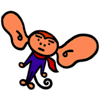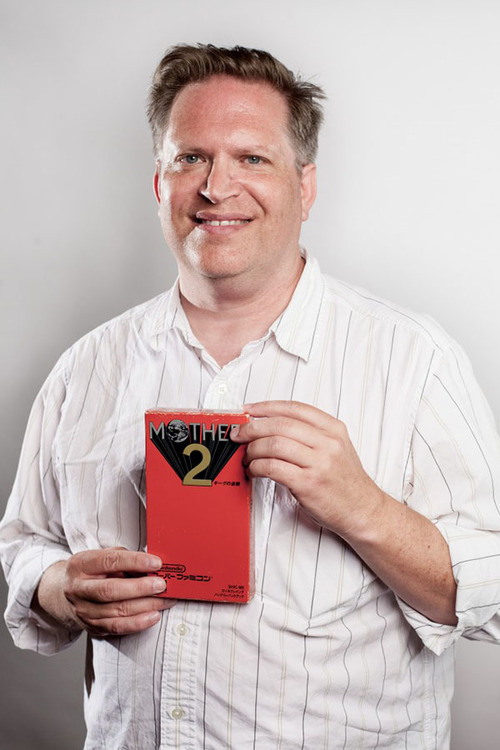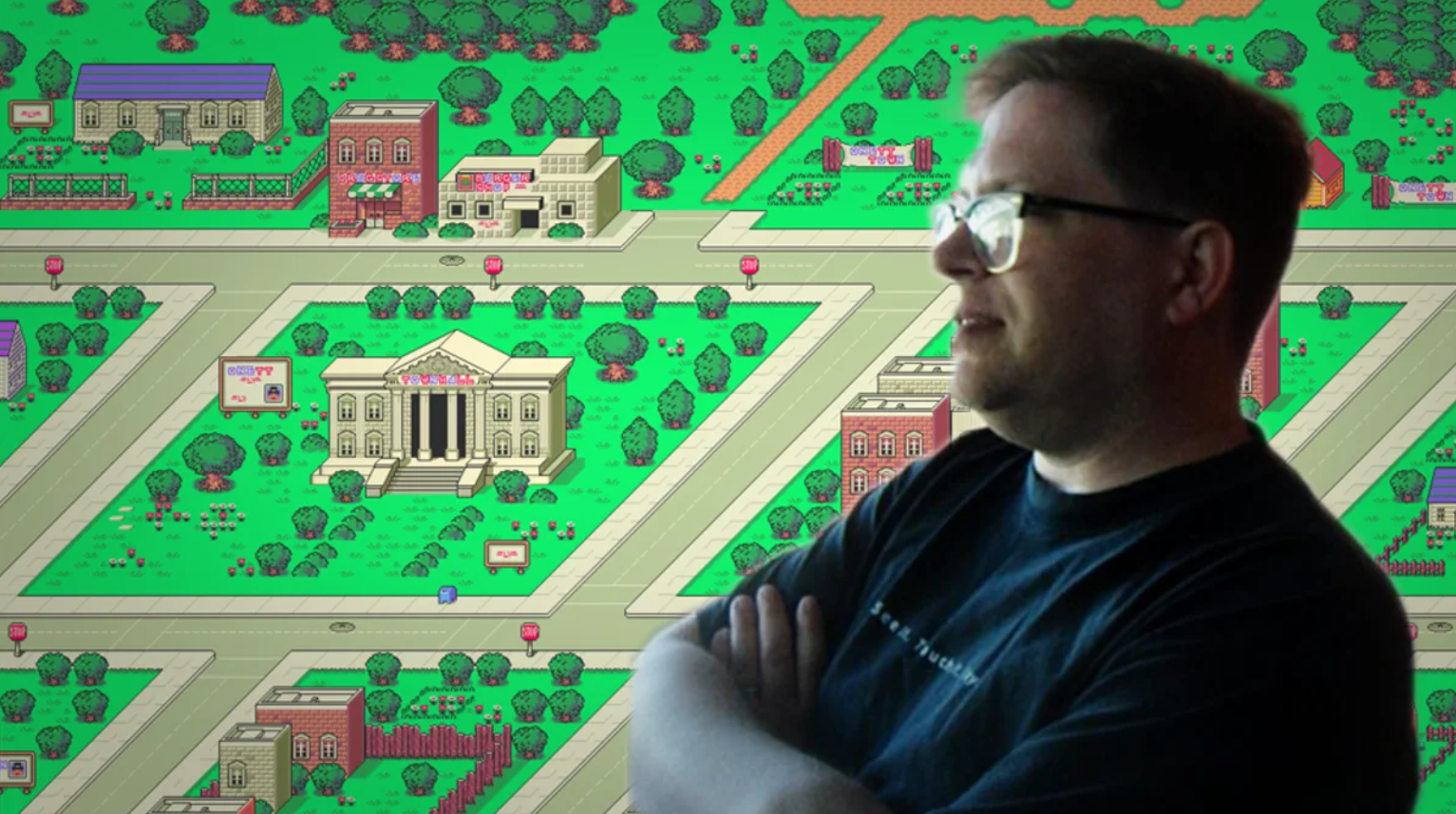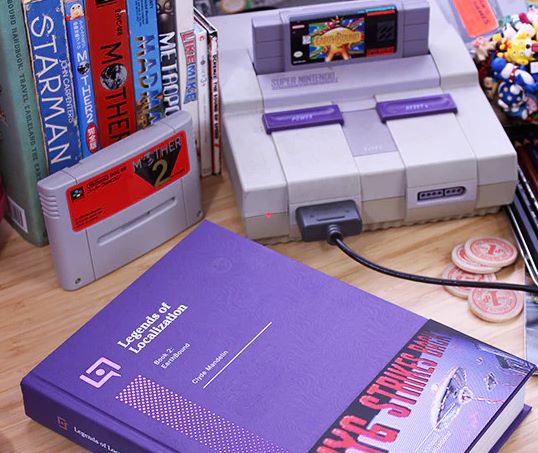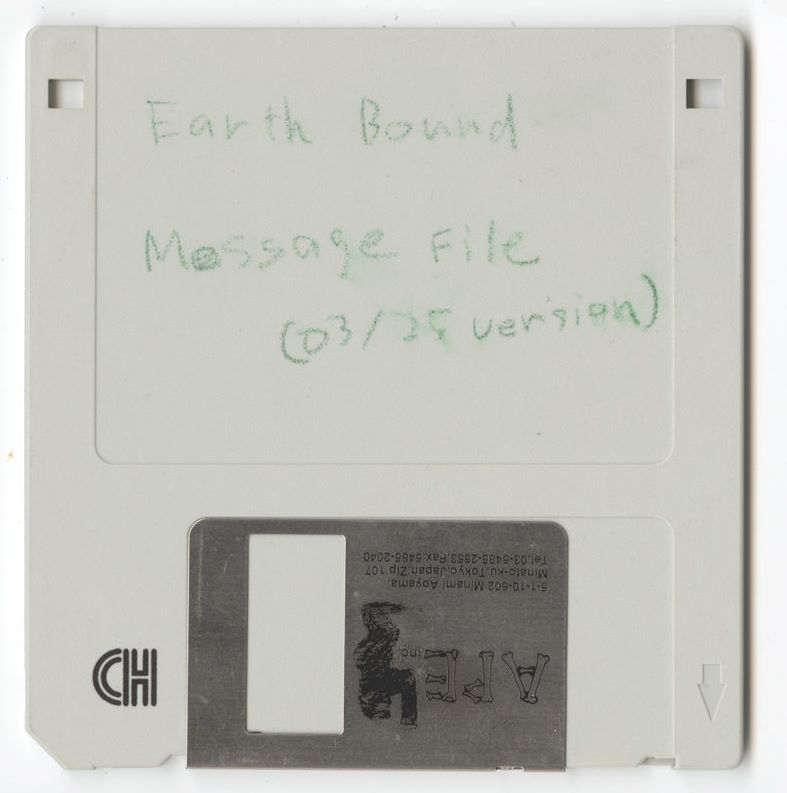EarthBound Localization
by: Kody NOKOLO on 2/9/2020
Throughout the years, there have been a few interviews with Marcus Lindblom, the localizer of EarthBound, and different analyses of EarthBound‘s localization by translator and community veteran Clyde “Mato” Mandelin. These are your go-to sources if you’d like to learn more about how MOTHER 2 became EarthBound.
Octopi! Spinal Tap! How Cult RPG EarthBound Came to America – July 23rd, 2013
EarthBound’s localization is a story of hardship, quirkiness, and improvisation. “The biggest challenge we had…was how to handle the cultural references,” Lindblom says, describing his creative process and how he tackled inputting references without the help of Shigesato Itoi. “You know what, I never actually met [Itoi],” he confesses. “…I think Itoi probably told the guys that if we had a choice between things, then just make it interesting”. It was up to Lindblom entirely, and the constant juggle between remaining faithful to the writing while also aiming to make it familiar to an American audience was daunting, to say the least. Lindblom states he was inspired by such things as bits and pieces from his youth and even his later life, such as with the birth of his daughter. He describes the entire process as “super squished”, with the game itself releasing in June 1995 and only barely beginning the localization in January. Despite the overall intensity of the project and challenges in determining what stayed and what was omitted or changed, Marcus Lindblom cheerfully asserts, “I’m really proud to have been involved with a game that was kind of low-key and gained popularity — or notoriety depending on how you want to look at it — over the years”.
Marcus Lindblom Fangamer Livestream Log – 2013
Marcus Lindblom stirs up some excitement as to the pronunciation of “Giygas” to an enthusiastic audience. “One thing I actually kind of like is the fact that there’s lots of things that people speculate about, and I would hate to kill some of that with answers…” he begins, much to the chagrin of the chat. “Oh, but answers resolve such burning questions!” one user proclaims, with another stating, “No, we’d love to hear all the juicy details”. Most offer their own interpretations and headcanons, such as “Ji-gas”, “Gee-gas”, and even “City gas”. At the very end, Lindblom quells the potential worries of the audience: “I promise that after having been away from the fan community for all these years, I’ll be around”.
The Man Who Wrote EarthBound – December 27th, 2016
Certainly, Marcus Lindblom did not anticipate the success of EarthBound years after its initial release in the West; in 1995, reviews at the time marked it as “nauseatingly cheery”, along with other dreary and disappointing adjectives. After spending four months writing the English script, reportedly, “…[for] fourteen or fifteen hours a day”, with a “…stretch of about thirty days where [he] didn’t take a day off”, to be greeted with less-than-positive reviews at the time was a damaging revelation for Lindblom. “It was pretty difficult for us, in some ways…” Lindblom affirms; however, nothing would prepare him for the overwhelming response the game received nearly twenty years later, when EarthBound was re-released on the Wii U Virtual Console on July 18th, 2013. Of course, EarthBound was not all lost and forgotten after its 1995 release; years passed and it became something of a cult classic after the fact. However, the widespread release on the Virtual Console allowed it to skyrocket its way to chart-based fame in the West. Lindblom still considers EarthBound his “finest accomplishment”, despite moving on to other projects and companies. “While it was a lot of work, it was probably the best project I ever worked on in a lot of ways,” he enthusiastically declares. Without Mr. Lindblom, together with help from Japanese writer Masayuki Miura, EarthBound would likely be lost on the American audience, for all that we know and love it for today.
Legends of Localization Book 2: EarthBound
With a script by a famous Japanese writer and a game overflowing with Western pop-culture influences, EarthBound stands out as one of Nintendo’s most fascinating localization projects ever. Get ready for hundreds of pages filled with surprising revelations, inside information, obscure trivia, and universal cosmic destruction. This legend of localization doesn’t stink!
Localization Source Files Analysis
Former Nintendo of America employee Marcus Lindblom was the man mainly responsible for the English-language script for EarthBound. In 2018, Lindblom re-discovered floppy disks from his time at Nintendo, including the raw scripting files used during the creation of the game! Mato dissects the files in this article from the Video Game History Foundation.
History
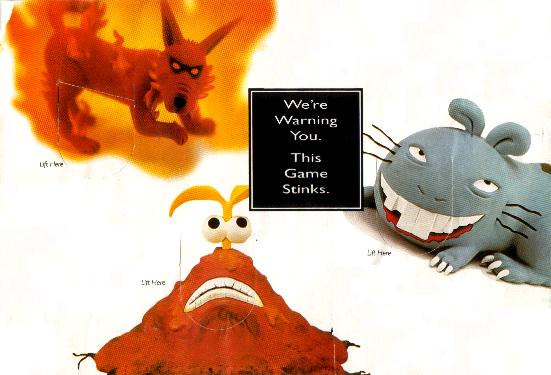
“This Game Stinks!”
This is the comical, yet bewildering tagline that headed advertisements for MOTHER 2 in North America. Rebranded as “EarthBound” (stylized as one word as opposed to the planned NES release), a surefire gross-out humor marketing campaign made it seem like the game would be a hit with consumers in the mid-90’s.Unfortunately, this wasn’t the case, as EarthBound only managed to push around 140,000 copies upon release, pitifully short of the 300,000 sold in Japan. What led to this result, despite what is now perceived as one of the all-time greatest localizations? All the secrets behind MOTHER 2’s journey to the West lie behind a cheerful man by the name of Marcus Lindblom.
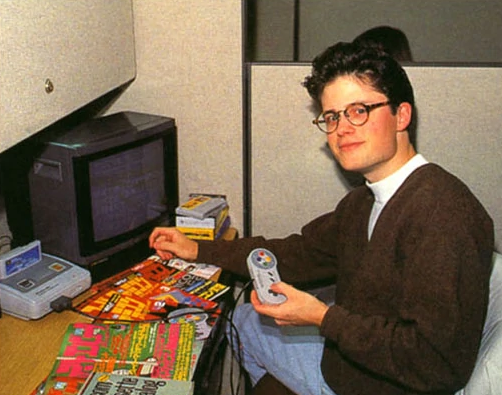
Lindblom originally began his career at Nintendo of America as a game counselor in their call center at Redmond, Washington, until moving his way up as a creative assistant on packaging games. Through this process of writing content for the game packaging and manuals, he began transcribing and revising the original Japanese text in games such as Wario’s Woods. Lindblom described this process as “fairly light” as there wasn’t much in-game text; little did he know the very next project that came his way would become one of the heftiest localizations for its time.
The original English pitch for MOTHER 2 was a demo created by Dan Owsen, a localization manager at Nintendo of America. The demo consisted of a ten minute portion of the game which set the direction for the English script, containing many of the iconic lines such as the photographer’s signature,“Fuzzy pickles!” catchphrase. In these early stages, the title of EarthBound had already been decided upon, carrying it over from the unreleased MOTHER prototype on the NES. The demo greenlit EarthBound for a release in the summer of 1995; however, as Owsen could no longer commit to the project, he decided to pass the torch to Marcus Lindblom. The localization project was set into gear in January of 1995, leaving an utterly short window of three months for the script to be completed!
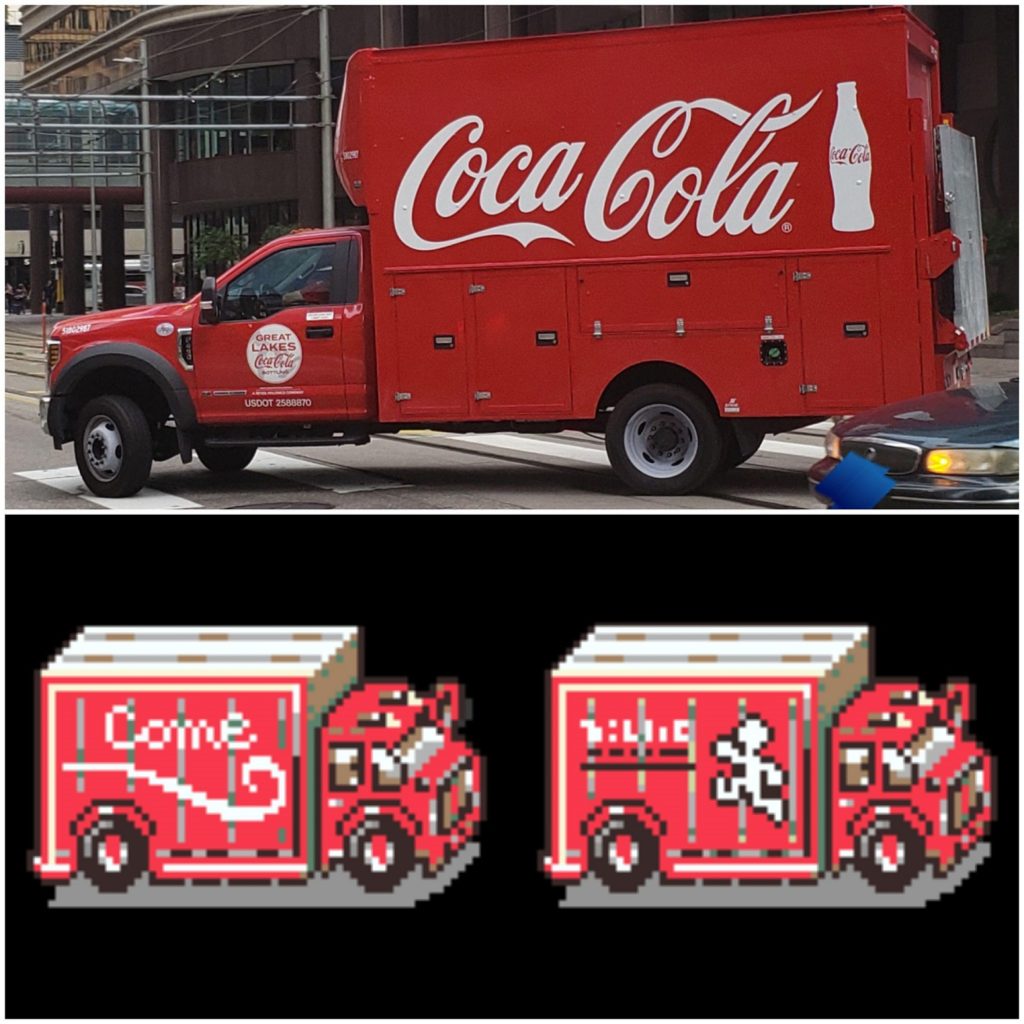
Thankfully, since a portion of the English text had already been written, Lindblom had some reference on how to approach the translation. The specific line of dialogue that inspired him was a single door in Onett, which when interacted with asks the player to fill in the blanks of the Beatles song, “Yesterday”. In the original Japanese version, they instead ask about, “Heidi, Girl of the Alps”, which wouldn’t be familiar to the new American audience. This allowed Lindblom some freedom in not hesitating from revising some of the obscure references, so long as it fit the witty tone. “Quirkiness is the big order of the day,” was the statement Lindblom was ordered to follow, so long as the storyline was preserved. The initial translation was provided by Keiko Tamura, who translated the original script in a direct manner. Lindblom’s responsibility was to take Tamura’s translations and recontextualize them while also adding flavour, changing dialogue whenever he felt necessary to make the writing as engaging as possible.
What may be most astounding about this process was the fact that Lindblom was not provided a build of the game when writing the script! All the material had been laid out in sheets which he used as his only frame of reference; graphics were being changed during this period of time in order to meet Nintendo of America’s standards.
“The downside was we didn’t get a good playable English version until really late,” Lindblom said to wired.com. “I can remember even in April, there was a point where the testing team could only play about half the game before it stopped working. It was well into May before we had a version that could be played to completion.”
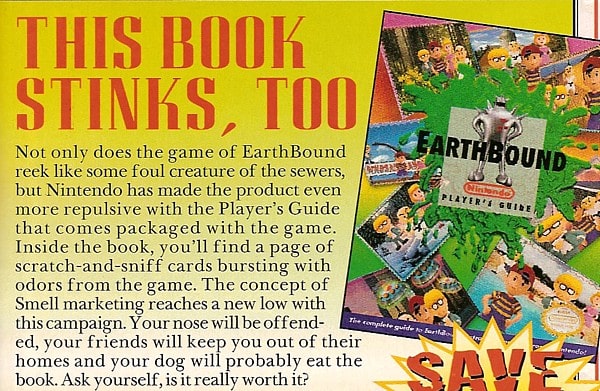
Much of the graphical changes amounted to religious or alcoholic references, as well as anything that might infringe on other trademarks or copyrights. A prime example was an all-too-familiar logo which Lindblom recognized; “Okay, the artwork on the truck looks a little bit too much like the Coca-Cola logo, we need to change that“. Thus, with all of his creative inspiration and imagination, Lindblom delivered a script which drew from many of his own influences, such as English comedian Benny Hill and classic Looney Tunes cartoons. One of the more humorous examples of censorship was the change of alcohol to coffee, which complimented the unconventional tone.
When his draft was completed, Lindblom reviewed it line-by-line alongside MOTHER 2 assistant game designer Masayuki Miura. This was to absolutely make sure everything naturally fit within the context of the game, which subsequently led to some new changes, one such change being the revision of the play-on-words, “Kokeshi Keshi” (meaning “Wooden Doll Eraser”) into the “Eraser Eraser”, retaining the strange, yet silly nature of the joke. Miura was hailed a “life-saver” in the whole process, along with the goofy nature of the game that spoke to Lindblom’s own sense of humor! However, with the writing completed, the game was now out of his hands. What was the next course of action to get EarthBound out on to the market?

To help visualize the game as something special in the eyes of consumers, the game was packaged with a free 128-page player’s guide crafted with love from the Nintendo Power team. The guide was themed as a mock travel brochure for each location in the game, reflecting the iconic humor of EarthBound inside of each page. Due to the size of the player’s guide, the size of the box for the game increased…along with the retail price. EarthBound retailed on the higher end for SNES games at the time for $69.95 USD, which made it a tough sell considering the niche interest in the RPG genre. Nintendo nevertheless had complete confidence in the game’s success, investing a $2 million dollar marketing campaign which aimed to appeal to the Nickelodeon crowd.

Nintendo Power advertised EarthBound as “the first role-playing game with B.O.”, and “like living in your gym shoes”. Although the focus on gross-out humor may seem questionable in retrospect, going as far to include the world’s worst-smelling scratch-and-sniff stickers, this approach was deemed appropriate considering the appeal of shows like Ren and Stimpy at the time. Unfortunately, whether due to Nintendo’s misjudgement on the marketing or the general lack of interest for RPGs, EarthBound fell far below expectations as a commercial failure. The critical response may have also contributed to the game’s failure, which overall was lukewarm at best. Many publications cited the graphics as “nauseatingly cheery” and primitive in the midst of the CGI boom. Games like Star Fox were at the forefront of technological advancements, with EarthBound feeling far too outdated in 1995. Total Magazine scored the graphics at a 6/10, calling them “Very crude. Visually a dozen years old”.
The commercial failure of EarthBound disappointed those involved with the localization, who had fashioned it to be a labour of pure love. Be that as it may, the reception of the game remained out of their control as everyone had moved on to other projects. EarthBound soon after was found in bargain bins, selling for as cheap as $10 a cartridge, leaving the game to fall into obscurity. Throughout the next few years, the game would begin to gain some traction purely through word-of-mouth, revitalizing interest in not only EarthBound, but the MOTHER series as a whole. In late 1998, EarthBound fans scattered all over the globe would be united together over a single webpage, which displayed a sweet, simple message: “Welcome to EarthBound.net, home to the EarthBound Movement! We are under construction! Thanks for your patience!”. Eventually, this movement would become known as Starmen.net, which enticed many to give EarthBound a second chance, and shaped it into a cult classic rather than a critical and commercial bomb!
Over the years, Starmen.net gained a lot of traction, going so far as attracting Lindblom’s attention. Through the everlasting passion of the MOTHER fandom, Lindblom was re-introduced to the game, surprised at the longevity it had. “The fan community is literally the best fan community there is in games,” Lindblom stated in an interview with Destructoid in 2014. Through this newfound connection between the community and the localization director, many new easter eggs in the game were brought to light, such as an NPC named Nico who was named after Lindblom’s daughter. Though he may have snuck in these personal inflections, Lindblom insists that EarthBound at the end of the day still belongs to Itoi:
“I feel like I was along for the ride, which was a great thing to be a part of. EarthBound is really to embodiment of Itoi’s philosophy, and the things he cared about and loved growing up. I feel like I was so fortunate that when I did the work, I didn’t lose a lot of that stuff!”.
And none of it was lost indeed, as today EarthBound is hailed as one of the finest localizations in gaming history, with its writing remaining timeless through its witty social commentary and humor. Some even claim the game has improved with age; one can only wonder how EarthBound may be viewed another twenty years from now! Needless to say, the fans will always be there, old and new, who wipe off what once was a dusty, neglected cartridge, discovering a world formed from the mind of Itoi and those who brought his creation over to the West.
Page Contributors
Kody NOKOLO – Analysis Writer
Echoes – History Writer
8lackSphinx – Editor
Find any errors or want to contribute? Let us know in our Discord!








